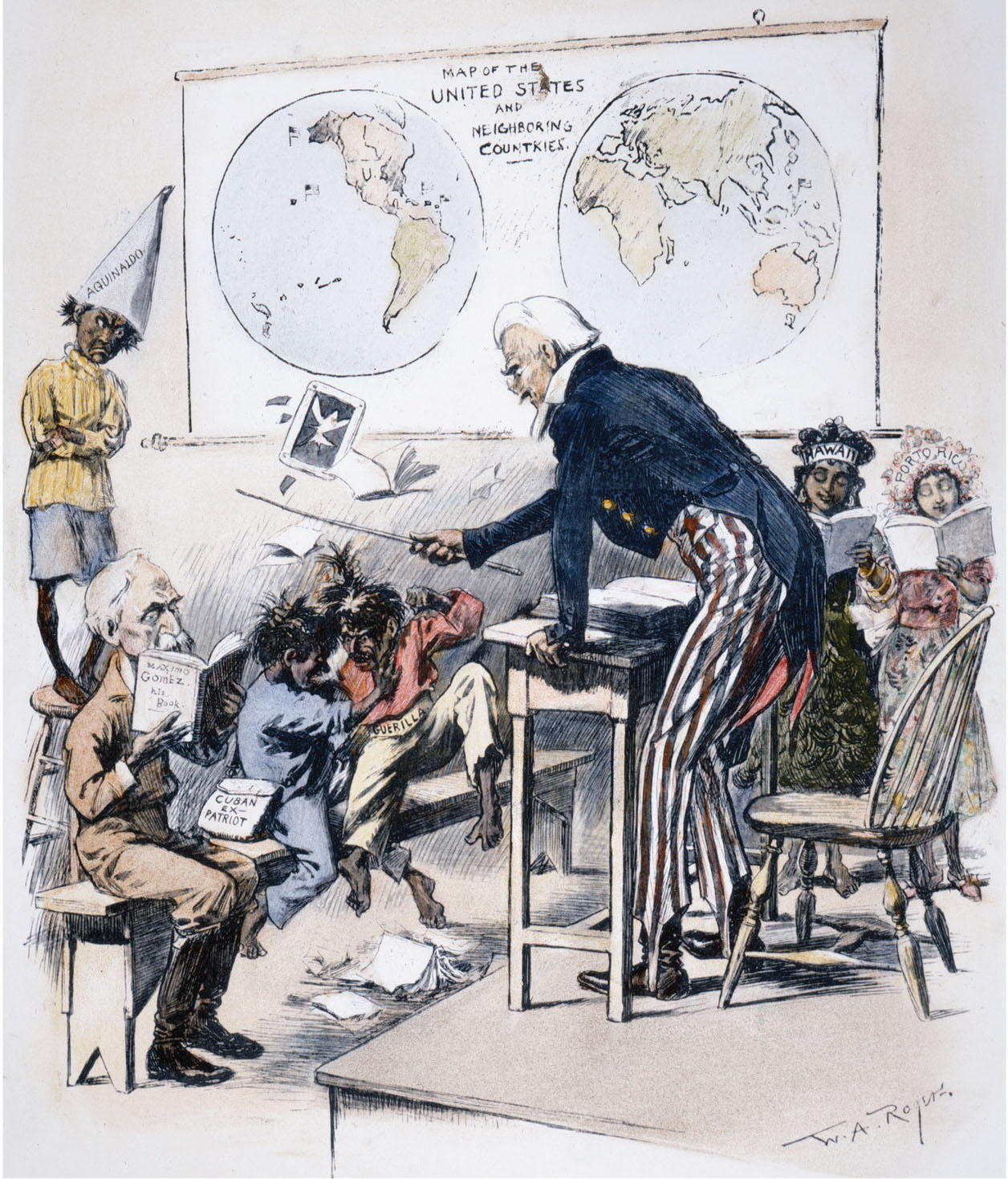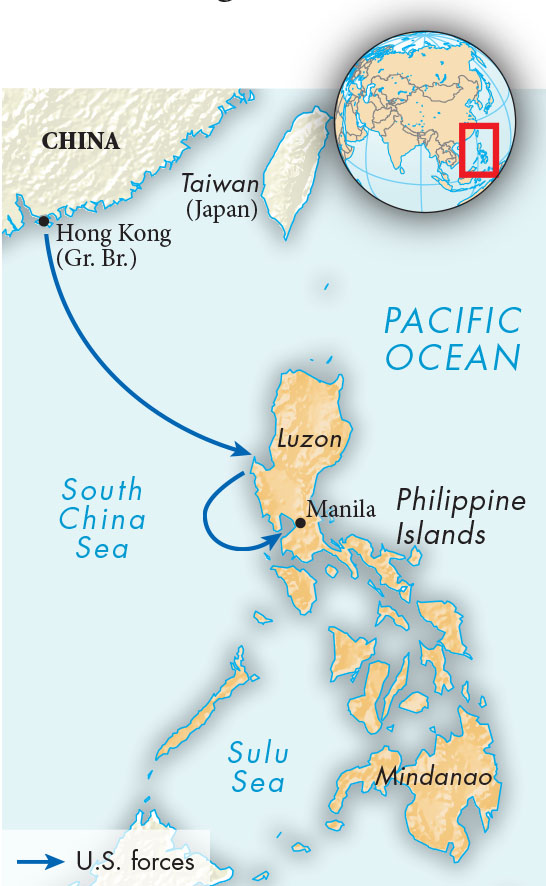A History of World Societies:
Printed Page 911
A History of World Societies Value
Edition: Printed Page 922
Chapter Chronology
Striving for Independence in Southeast Asia
The tide of nationalism was also rising in Southeast Asia. Like their counterparts in India, China, and Japan, nationalists in French Indochina, the Dutch East Indies, and the Philippines urgently wanted genuine political independence and freedom from foreign rule. In both French Indochina and the Dutch East Indies they ran up against an imperialist stone wall. The obstacle to Filipino independence came from America and Japan.
The French in Indochina, as in all their colonies, refused to export the liberal policies contained in the stirring words of their own Declaration of the Rights of Man and of the Citizen: liberty, equality, and fraternity (see “Demands for Liberty and Equality” in Chapter 22). This uncompromising attitude stimulated the growth of an equally stubborn Communist opposition under Ho Chi Minh (1890–1969), which despite ruthless repression emerged as the dominant anti-French force in Indochina. (See “Viewpoints 29.2: Nationalism in Vietnam and Turkey.”)
In the East Indies — modern Indonesia — the Dutch made some concessions after the First World War, establishing a people’s council with very limited lawmaking power. But in the 1930s the Dutch cracked down hard, jailing all the important nationalist leaders. Like the French, the Dutch were determined to hold on.
In the Philippines, however, a well-established nationalist movement achieved greater success. As in colonial Latin America, the Spanish in the Philippines had been indefatigable missionaries. By the late nineteenth century the Filipino population was 80 percent Catholic. Filipinos shared a common cultural heritage and a common racial origin. Education, especially for girls, was advanced for Southeast Asia, and already in 1843 a higher percentage of people could read in the Philippines than in Spain itself. Economic development helped to create a westernized elite, which turned first to reform and then to revolution in the 1890s. As in Egypt and Turkey, long-standing intimate contact with Western civilization created a strong nationalist movement at an early date.

Uncle Sam as Schoolmaster In this cartoon that first appeared on the cover of Harper’s Weekly in August 1898, unruly students identified as a “Cuban Ex-patriot” and a “Guerilla” are being disciplined with a switch by a stern Uncle Sam as he tries to teach them self-government. The gentleman to the left reading a book is José Miguel Gómez, one of Cuba’s revolutionary heroes, while the Filipino insurrectionist Emilio Aguinaldo is made to wear a dunce cap and stand in the corner. The two well-behaved girls to the right represent Hawaii and Puerto Rico. (The Granger Collection, NYC — All rights reserved.)
Filipino nationalists were bitterly disillusioned when the United States, having taken the Philippines from Spain in the Spanish-American War of 1898, ruthlessly beat down a patriotic revolt and denied the universal Filipino desire for independence. The Americans claimed the Philippines was not ready for self-rule and might be seized by Germany or Britain if it could not establish a stable, secure government. As the imperialist power in the Philippines, the United States encouraged education and promoted capitalistic economic development. And as in British India, an elected legislature was given some real powers. In 1919 President Wilson even promised eventual independence, though subsequent Republican administrations saw it as a distant goal.

The Spanish-American War in the Philippines, 1898
As in India and French Indochina, demands for independence grew. One important contributing factor was American racial attitudes. Americans treated Filipinos as inferiors and introduced segregationist practices borrowed from the American South. American racism made passionate nationalists of many Filipinos. However, it was the Great Depression that had the most radical impact on the Philippines.
As the United States collapsed economically in the 1930s, the Philippines suddenly appeared to be a liability rather than an asset. American farm groups lobbied for protection from cheap Filipino sugar. To protect American jobs, labor unions demanded an end to Filipino immigration. Responding to public pressure, in 1934 Congress made the Philippines a self-governing commonwealth and scheduled independence for 1944. Sugar imports were reduced, and immigration was limited to only fifty Filipinos per year.
Like Britain and France in the Middle East, the United States was determined to hold on to its big military bases — Subic Bay Naval Base and Clark Air Force Base — in the Philippines even as it permitted increased local self-government and promised eventual political independence. Some Filipino nationalists denounced the continued presence of U.S. fleets and armies. Others were less certain that the American presence was the immediate problem. Japan was fighting in China and expanding economically into the Philippines and throughout Southeast Asia. By 1939 a new threat to Filipino independence would come from Japan itself.

